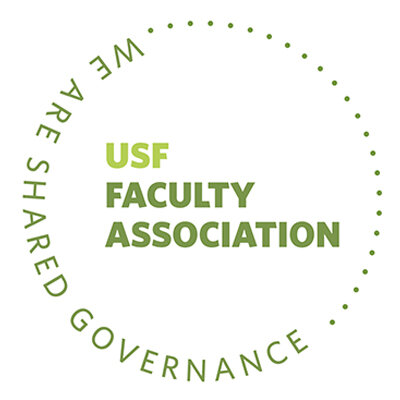
The University of San Francisco Faculty Association:
The Struggle for Industrial-Model Unionism
By Jim Rose
Introduction by Michael Lehmann
Jim Rose has written an outstanding history of our Union’s formative years, from its 1975 founding to the 1988/89 conclusion of the University’s attempts to destroy it.
We’re accepted on campus now, and a recent University President thanked my wife, Millie, and me for saving the University. That’s a measure of how badly the University behaved under the old regime.
We organized in 1975 when the University’s president told the Faculty Welfare Committee that it could “go to collective bargaining” if the committee was unhappy with the President’s take-it-or-leave-it posture. He was surely making a snide joke, because the administration never believed--until it was too late for them--that a faculty union drive could possibly succeed. But we took the President’s advice and organized to secure our first collective bargaining agreement on June 30, 1976. The Board of Trustees fired the president three months later.
But the next president was – unbelievably – even worse. And Jim Rose has faithfully and excellently recorded our struggle to preserve our rights and thereby preserve faculty excellence and the University’s standing. If that president had prevailed, the University would likely have become a second-rate local college instead of enjoying the status it has subsequently achieved.
Jim’s tale is buttressed by the documentary evidence he has marshalled to support his narrative. It’s an outstanding record of a rare success for collective bargaining in private-sector higher education. But Jim’s account is more than the story of faculty and librarians at one university. It’s a reckoning of how employees can mobilize collective bargaining to preserve their dignity in the face of an employer’s unscrupulous bullying.
-Mike Lehmann, September 6, 2023
Founding President and member of our first Negotiating Team
Table of Contents
Dedicated to the faculty and librarians, past, present, and future, of the University of San Francisco
Introduction
Chapter 1: From College to University, 1855-1969
Chapter 2: “The March of Laymen”: Governance and Working Conditions, 1945-1968
Chapter 3: New Promises and Old Frustrations
Chapter 4: Budget Woes and a Wage Freeze
Chapter 5: “You Can Go to Collective Bargaining”
Chapter 6: “Revolt of the Middle Professors”: Organizing the Union
Chapter 7: “Maybe Some Good Will Come of This”: Negotiating the First Contract
Chapter 8: The First Year
Chapter 9: Crisis I: The Modular System
Chapter 10: The Lull before the Next Storm, 1979-1980
Chapter 11: Crisis II: The Koven Firing
Chapter 12: Cleaning up the Koven Firing
Chapter 13: Crisis III: “In the Trenches for Another Death Struggle”
Chapter 14: Trench Warfare: “Throwing Sand into the Gears”
Chapter 15: Getting the Mule’s Attention
Epilogue
About the author
Jim Rose is a labor historian with a PhD from UC Davis. He is the author of Duquesne and the Rise of Steel Unionism (Urbana: University of Illinois Press, 2001) and articles in Labor History and Business History Review. He has taught at UC Davis, Texas A&M, and primarily at CSU Sacramento. He also spent a year as a Visiting Asst. Professor at USF. He is currently retired and living in Martinez, California.
